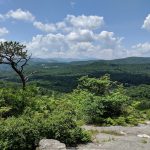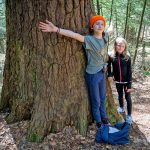
Magnificent, strong and once thriving in Appalachian forests, oaks now struggle to regenerate. As deadly diseases spread in other regions, a new alliance is emerging to protect this key species.

Magnificent, strong and once thriving in Appalachian forests, oaks now struggle to regenerate. As deadly diseases spread in other regions, a new alliance is emerging to protect this key species.

Conservationists across the region have teamed up to help restore the red spruce to its natural habitat after unsustainable logging practices in the early 1900s, coupled with wildfires, nearly wiped out the tree in Appalachia.

Conservationists, recreation enthusiasts, the timber industry and more have played a major part in the U.S. Forest Service’s ongoing effort to make major changes to the Nantahala-Pisgah National Forest Management Plan for the first time since 1994.

Appalachian Voices asked conservationists, recreational users, a Cherokee tribal member and more what they most want to see from the new Nantahala and Pisgah National Forest Plan.

Deirdre Perot is the national public lands representative for the Back Country Horsemen of North Carolina, a nonprofit organization that works to maintain backcountry horse trails. She is also a co-founder of the Nantahala-Pisgah Forest Partnership, a collaborative group of…

Guest blogger Chad Cordell of the Kanawha Forest Coalition provides an update on a West Virginia bill that would allow commercial logging of high-value trees in WV state parks, and shares some easy ways to contact decision-makers in support of our parks. #SOSParks
How Appalachian House and Senate members voted regarding several environmental issues in October and November.
Advocates for sustainably grown ginseng hope a new certification helps to curb over-harvesting and poaching of this valuable medicinal plant.
After a hike up a mountain, Andrea Brandon gently places a red spruce sapling into the rich West Virginia soil. Though only twelve inches tall, this small tree and others like it are a promising start to the restoration of an entire ecosystem.
By Amber Ellis Originally from eastern Russia and northeastern Asia, the emerald ash borer found its way to southeastern Michigan through infested cargo ships in 2002 and quickly became North America’s most destructive forest pest. Since then, the invasive beetle…